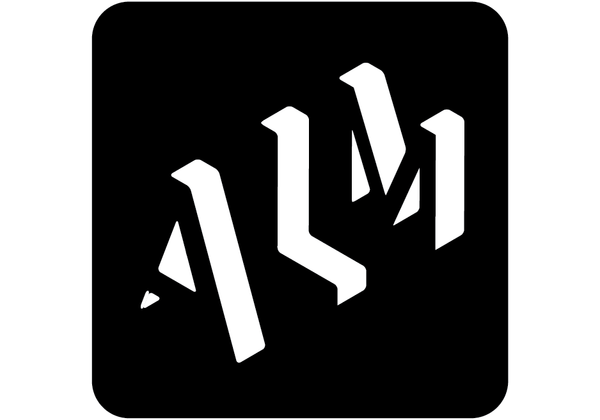
Turismo: Environment Sound Design
Our Eurorack modular workstation the 'Turismo' is well suited for sequencing beats and groove box style patching but the versatile system can fit equally well into less structured environments.
In this patch we explored using the Turismo for realistic environmental sound design, making use of it's plethora of utilities and interesting sound shaping capabilities to create a custom environment with realistic rain and thunder sounds entirely synthesized by the system.
Rain
First we built a simple rain patch, starting with the TAZM-O VCO as our source. We patched a sine wave from its primary shape output through one side of the MCFx2, taking its resonant band pass filter output to the first channel of the MEGA-TANG mixer and VCA. When synthesizing realistic sounds, band pass filters are often the most natural sounding option for mimicking physical forms.
Many natural physical sounds also include an element of chaos, like noise. Among the many analog utility circuits found on the MEGA MILTON there is a simple white noise generator which we used as the primary driver of our rain sound. We duplicated the noise using the mult and took one copy to amplitude modulate the built in level VCA of the TAZM-O. Once connected, the noise modulation produced a crackling sound similar to rain drops, we then tweaked the parameters of both the oscillator and filter to taste to shape basic starting point of the sound.
To make the rain sound more natural, we took an additional copy of our white noise and patched it to modulate the filter cutoff of the MCFx2. Once the CV attenuator was increased, a more distant general rain texture began to emerge. A careful balance of the oscillator and filter parameters helped to determine the final result, which can sound more direct and intense or light and distant depending on the settings.

With our basic rain sound synthesized, we added realism and space by sending it through the MFX. We used the Ursa Minor Echoverb to produce a subtle stereo multitap echo that provided a physical sounding environment for our sounds. For reflections reminiscent of cement or brick, the Ursa Minor was set to Echo mode with a time of 200ms in 'Cloud' mode. The feedback was increased to 15% with all taps at full level.
Next we added detail to the rain in the form of two additional layers of random water droplets. We used the low pass output of the MCFx2 from our primary rain patch, connecting it to the second channel of the MEGA-TANG. We then moved to Pamela's PRO Workout for modulation, setting the first output to produce a x4 exponential envelope. We connected it to control the VCA level of the MEGA-TANG, resulting in a sound similar to water dripping. Finally, we lowered the probability of the envelope firing to 10%, resulting in sparse random drops of rain.
After that, we created another identical copy of the drops using the high pass output of the MCFx2 from our primary rain patch into the third channel of the MEGA-TANG controlled by another randomly occurring envelope from Pam. We then placed both drops further into our environment by sending them through the MFX, and panned them left and right for a more realistic stereo space. We brought back our base rain sound for the final result.
Thunder
To complete our synthesised stormy environment, we then created the sounds of thunder rumbling in the distance. This layer was based around the same basic concept as the rain: modulating a filter with noise. We started by patching the B output of the CIZZLE oscillator through the other side of the MCFx2, filtered by its second resonant band pass filter, then into 4th channel of the MEGA-TANG.
We set oscillator B of the CIZZLE to 'Noise' mode, selected a chord, and lowered its frequency offset all the way. We then engaged the Mix switch to bring in oscillator A, increasing both its Shape and PD Algo controls to produce a saw wave. Finally, we lowered the master tuning all the way, producing the lowest frequency from both oscillators.

Next we increased the filter resonance and lowered the cutoff to let a narrow range of low, rumbling frequencies through. Similarly to the rain patch, we modulated the filter cutoff at audio rate with the A output of the CIZZLE to add a more natural quality and crackle to the rumble.
Returning to the Pam PRO, we used another output to produce a x1 trigger that we patched to the QUAID MEGASLOPE modulator in envelope mode. We duplicated its output with the mult and took one copy to the channel 4 VCA level of the MEGA-TANG. We set up a multistage envelope with a sharp attack followed by a long gradual swell and a slow decay, similar to a typical thunder sound. We then connected the second copy of the envelope to modulate the level of oscillator A on the CIZZLE, altering the clarity of the sound to add further realism.
Once the envelope sounded close to thunder, we lowered the trigger speed from Pam to /2, also lowering the probability to randomly trigger the thunder at a frequency similar to real life. We then tweaked the envelope to better represent the sound. We also placed the thunder further into our environment by sending it through the MFX, adding a realistic stereo smear to the sound.

We then mixed our rain back in with the thunder. With the base sounds designed we freely tweaked the settings, adding even more natural realism to the environment.
The Turismo offers many possibilities for exploring sound design with its plethora of modulation options, utilites and numerous control voltage inputs. In addition, a wide range of processing options via the MFX's programs and the possibilities of sampling and layering with the Squid offer endless fun and exploration in less conventional patches.




